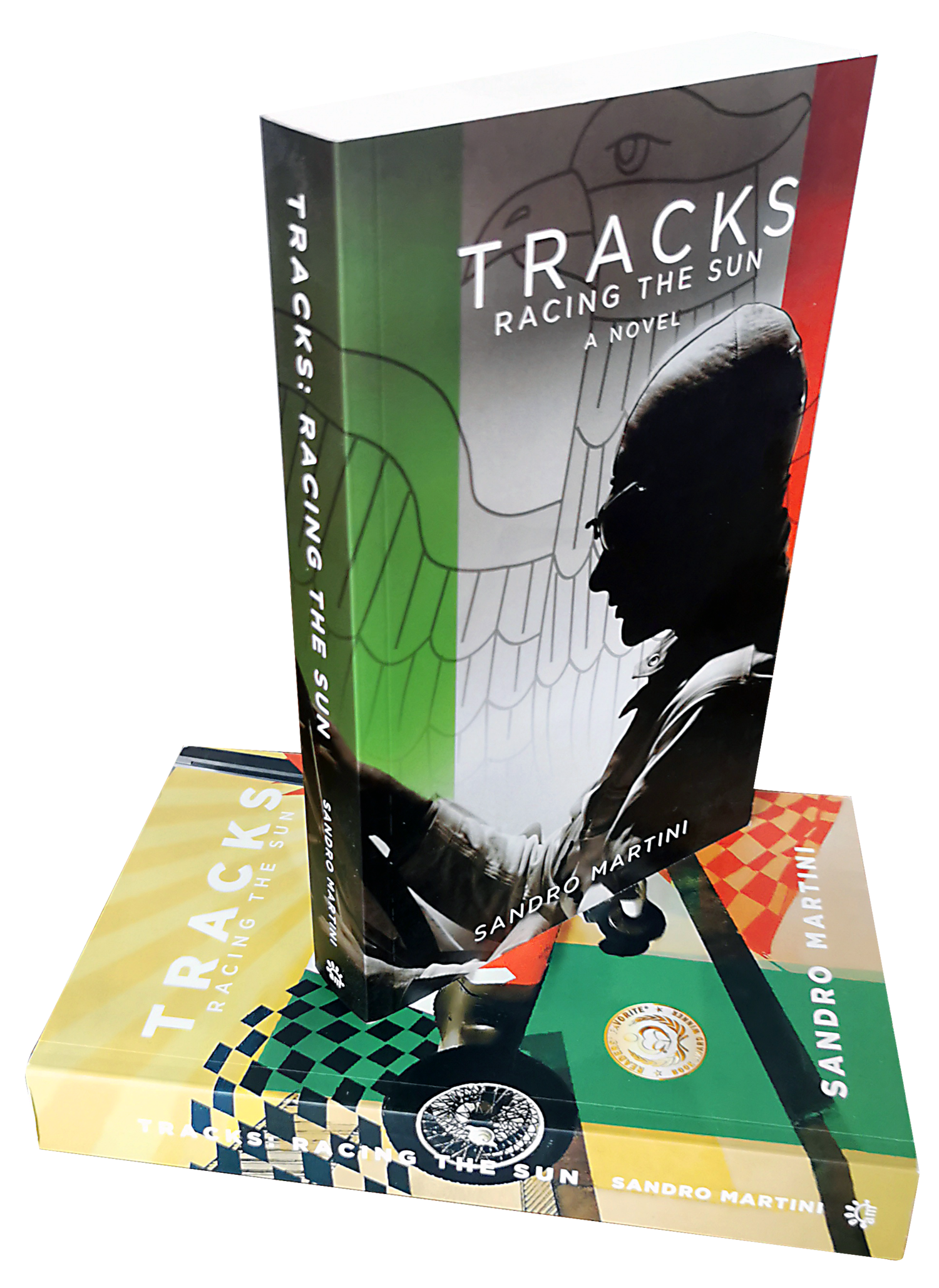FACT AND FICTION
̶ What happened to Elly Beinhorn and “Baby Bernd”?
Elly Beinhorn died, aged 99, in 2007. Her and Bernd’s son is orthopaedist Dr. Bernd Rosemeyer.
̶ Rear-engined race cars were a new invention in the 1960s, right?
Another common misconception is that the rear-engine revolution in race cars came into being in the 1960s in Britain. However, Auto Union and its chief designer, Dr. Porsche, had mid-engined race cars winning Grands Prix in 1935. It would take a world war and almost three decades before the motoring world rediscovered what Auto Union already knew back then.
Varzi and Nuvolari, the first and most dangerous rivalry
Varzi was haunted by morphine and nerves
̶ Did “Baby” Hoffman really invent the “spotter” at Indianapolis?
Difficult to verify. The legend reads as follows: In 1929, Baby Hoffman and her lover Louis Chiron went to Indianapolis where Chiron was entered for the 500 in his Delage. In those days, women were not permitted in the paddock, and Hoffman, who was Chiron’s race chief, and angered at having to watch the race from the stands, had a scaffold constructed in the middle of the oval from where she monitored and timed the race. Chiron finished 7th.
̶ Was Achille Varzi a morphine addict?
Yes, there is no dispute that he was addicted to morphine. Where historians differ is (1) when he began taking the drug (most believe it was after his humiliation in Libya by Marshall Balbo) and (2) whether it was Ilse Pietsch who turned him onto the drug, or whether he fell under its spell during 1936 when he was taking painkillers for a stomach ailment.
Ilse: She vanished in 1939. Many rumors through the years … but what really happened to the woman Mussolini banned from Italy?
̶ Did Varzi, Nuvolari, and Borzacchini fix the Libyan Grand Prix in 1933?
Yes, there is little doubt these three drivers actively colluded to fix the result. What remains unknown is the extent of their collusion: the version told in Tracks, where the three chose not to race each other, is widely accepted as the most probable version. Whatever the truth, it is acknowledged that all three walked away millionaires from one of the most lucrative sporting swindles in history.
̶ Did Mussolini get personally involved with the Ilse Pietsch-Achille Varzi affair?
Yes. Journalist Giovanni Canestrini (on whom the fictional journalist Johnny Finestrini is based), while never writing about Varzi’s addiction, was clearly in the know (given his now published letters to Varzi regarding his addiction), and probably worked with Minster of Foreign Affairs Ciano to revoke Ilse’s residence permit in Italy.
̶ What happened to Paul Pietsch?
Paul Pietsch enjoyed a long and successful life: He died in 2012 at the unlikely age of 101, after having founded Germany’s premiere motoring magazine, Das Auto, after the war.
̶ Why the big steering wheels?
The steering wheels were big not because the designers didn’t know the advantages of a small wheel: They were big because, holding on to them, was the only thing that kept the drivers of the day in their cockpits! The safest way of surviving an accident back then was getting hurled from the cockpit, so no restraining devices were used, which meant drivers holding themselves in the cockpit with feet firmly planted and hands gripping the wheel at 200MPH.
̶ How fast were those cars?
A common misconception is that the cars of yesteryear were not that quick. In fact, by 1939, the Auto Union and Mercedes Benz were producing over 550BHP in cars that weighed under 800KGs! Speeds of 200MPH (340KMH) were common.
̶ Did America ever see these pre-war beasts in action?
Roosevelt Raceway was a racetrack located in the town of Westbury in Long Island, New York, and was the site of the Vanderbilt Cup, a grand prix that was run in 1936 (won by Nuvolari in his Alfa Romeo), and 1937 (won by Bernd Rosemeyer in his Auto Union). The track has now vanished, the only remains being the name that houses a movie complex and shopping center.
̶ So why is the most iconic corner in all of motor sports named the “Caracciola Karussell”?
The Nürburgring, the legendary 14-mile “Green Hell” circuit in Germany, hosted the German Grand Prix before the war. Of all its 73 corners, one stands out as possibly the most iconic turn in all of motor-sports … the Caracciola Karussell. It was named after Caracciola because the turn itself, now a banked turn, was never designed as such. When Caracciola first ran the track, he realized that the banked dirt ditch on the inside of the tight left-hand hairpin was the quickest way around. Come race day, Caracciola used this line to win the race. Years later, when the track was repaved, the ditch was paved, and became the iconic turn of today, with the banking inside the turn, and the regular line above the crown.
Nuvolari at Monaco circa 1932
Achille Varzi
Tracks were often on open roads
Nuvolari in the Auto Union
Varzi wins the Mille Miglia
Ilse ... After 50 years of mystery, the truth is finally revealed ...
Varzi the inscrutable
Three legends: Bernd Rosemeyer, his wife the aviatrix Elly Beinhorn, and Tazio Nuvolari
Tazio wins the Mille Miglia
Nuvolari meets Hitler
Nuvolari had nothing left to save
Varzi and Hans Stuck in Florence, watching Nuvolari's speed record attempt
The final race
Nuvolari uses a wrench to steer
Varzi during the war
Varzi the post-war version




















